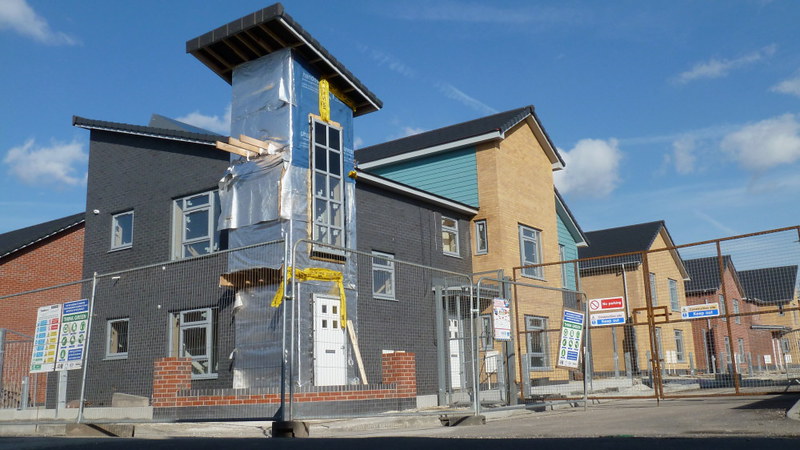Construction and the housing market restart
Contents |
[edit] Introduction
On 13 May 2020, it was announced that buyers and renters in England could move home once again as long as they follow new guidance published by Housing Secretary Robert Jenrick. Restrictions were introduced in March 2020 during the coronavirus outbreak, and people have not been permitted to move unless the need was urgent. They will now be able to complete purchases and view properties in person, while estate agents, conveyancers and removals firms can return to work as long as they follow social distancing guidelines. This relaxation does not apply to properties in Wales, Scotland or Northern Ireland.
[edit] Construction resumes
A series of measures was also introduced to reactivate residential construction, including:
- Allowing builders to agree to more flexible construction site working hours with their local council. This includes measures such as staggering builders’ arrival times to ease pressure on public transport.
- Enabling local councils and developers to use social media instead of posters and leaflets to publicise planning applications.
- Allowing smaller developers to defer payments to local councils, helping those struggling with their cash flow while ensuring communities still receive funding towards local infrastructure in the longer term.
[edit] Safety prioritised
A new Safe Working Charter was also launched by the Government and the Home Builders Federation. The goal of the Charter is to help construction sites reopen in line with the latest health and safety guidance.
John Newcomb, chief executive office of the Builders Merchants Federation, said,“Safety has the highest priority as the industry returns to work. Since the publication of new branch operating guidelines [in April 2020], we have seen increasing numbers of merchants safely re-opening or expanding operations to support their trade customers.”
Guidance from Public Health England must continue to be followed. For example, anyone advised to self-isolate should continue to do so and not move home.
Government guidance makes clear that tradespeople including fitters can operate in homes, provided they do so in line with health guidance. Show homes can also re-open, following social distancing guidance.
The Safe Working Charter compliments detailed guidance available from the Construction Leadership Council on further reducing the risk of infection onsite.
These measures build on action from the Government to support the economy and protect the capacity of the construction sector, including:
- Introducing more than £330 billion of loans and guarantees to help firms continue operating.
- Deferring self-assessment payments until 2021 – crucial for a sector in which many are self-employed.
- Providing households with three-month mortgage holidays, including for landlords, alongside a three-month ban on tenant evictions.
Ref: https://www.gov.uk/government/news/housing-secretary-sets-out-plan-to-re-start-housing-market
[edit] Related articles on Designing Buildings Wiki
- Beyond the pandemic.
- Builders Merchants Federation.
- Construction Leadership Council CLC.
- Coronavirus
- Coronavirus and force majeure.
- Construction sites urged to integrate test and trace.
- Engineering services bodies issue coronavirus site safety guides.
- Home Builders Federation.
- New deal for infrastructure 2020.
- New domestic electrical work video.
- Plan proposes to reinvent construction industry.
- Social distancing compliance marshal.
- The future of the coronavirus furlough.
[edit] External resources
- Construction Leadership Council: Site Operating Procedures Version 3 (This downloadable PDF is the basis for the Government's Safe Working Charter).
- GOV.UK: Working safely during coronavirus (COVID-19).
Featured articles and news
RTPI leader to become new CIOB Chief Executive Officer
Dr Victoria Hills MRTPI, FICE to take over after Caroline Gumble’s departure.
Social and affordable housing, a long term plan for delivery
The “Delivering a Decade of Renewal for Social and Affordable Housing” strategy sets out future path.
A change to adoptive architecture
Effects of global weather warming on architectural detailing, material choice and human interaction.
The proposed publicly owned and backed subsidiary of Homes England, to facilitate new homes.
How big is the problem and what can we do to mitigate the effects?
Overheating guidance and tools for building designers
A number of cool guides to help with the heat.
The UK's Modern Industrial Strategy: A 10 year plan
Previous consultation criticism, current key elements and general support with some persisting reservations.
Building Safety Regulator reforms
New roles, new staff and a new fast track service pave the way for a single construction regulator.
Architectural Technologist CPDs and Communications
CIAT CPD… and how you can do it!
Cooling centres and cool spaces
Managing extreme heat in cities by directing the public to places for heat stress relief and water sources.
Winter gardens: A brief history and warm variations
Extending the season with glass in different forms and terms.
Restoring Great Yarmouth's Winter Gardens
Transforming one of the least sustainable constructions imaginable.
Construction Skills Mission Board launch sector drive
Newly formed government and industry collaboration set strategy for recruiting an additional 100,000 construction workers a year.
New Architects Code comes into effect in September 2025
ARB Architects Code of Conduct and Practice available with ongoing consultation regarding guidance.
Welsh Skills Body (Medr) launches ambitious plan
The new skills body brings together funding and regulation of tertiary education and research for the devolved nation.
Paul Gandy FCIOB announced as next CIOB President
Former Tilbury Douglas CEO takes helm.
UK Infrastructure: A 10 Year Strategy. In brief with reactions
With the National Infrastructure and Service Transformation Authority (NISTA).























